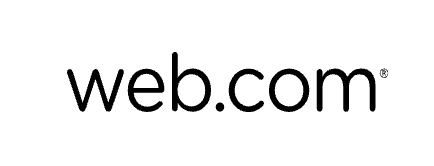How to Write a Mission Statement With 20 Inspiring Examples?

What is it about certain brands that keep us coming back? What about them makes us spend more time, money, or effort over other options? Is it the price? Maybe the convenience? Or is it something more?
The companies and brands we like usually go beyond simply selling a product or providing a service. They display a cause that we can get behind. This can be displayed in how workers interact with clients, the organizations and communities they serve, and even how they produce their products. And there’s no better way to demonstrate this goal as a business leader than with a well-written mission statement.
Every business needs a mission statement to define its goals and purpose. It is a guiding light that can help you stay focused and motivated. But how do you write an effective mission statement? This blog post will explore a mission statement and why it is crucial. We will also provide ten inspiring mission statement examples to get you started. Finally, we will give you a step-by-step guide on how to write your mission statement. So, let us get started!
What is a mission statement?

A mission statement is a short, action-oriented statement describing your corporation’s purpose. It explains what your company does for customers, staff, and owners and generally includes general descriptions of your company, its primary focus, and its goal. You describe what you do and why you do it within a mission statement.
Writing a mission statement is essential in setting goals for your business. It’s also one of the most common goals that businesses struggle to achieve. A mission statement is a concise, inspiring statement that defines your company’s purpose and objectives. It should be significant, concise, and updated to reflect the company’s changing priorities.
Read also: The Best Clothing Brand Names Ideas That Perfect for You
Depending on the nature of your business, your mission statement could be even more expansive. Explain how you serve your customers, employees, community, and world. Some companies even divide the larger goal into what’s known as a vision statement.
What is a vision statement?

A vision statement is a description of your goals as a company. It describes what you aspire to accomplish and the direction you would like to take your business.
A vision statement is a more long-term outlook compared to a mission statement. It is usually more aspirational and helps to guide the direction for future growth. It is vital for a company to have both a mission statement and a vision statement to provide clear direction and goals for the business.
Acquiring a shared vision among the members of an organization can help ensure that everyone is working together towards the same goal. A well-written vision statement should include the values and guiding principles of the organization as well as your desired future for the company. It should be a short and powerful statement, but also flexible enough to adapt to changing times.
This would be your larger goal if it were OKRs (objectives and key results). Your mission statement would then be the key results or steps you need to take to get there. Again, this is an aspirational representation of the purpose behind your business. That doesn’t mean the ultimate goal of the statement is impossible, but it is meant to be something you and your company are trying to achieve.
Mission statement or vision statement?
These are not comparable statements. They both represent the purpose of your company but serve different purposes. Your mission statement should be the map to guide you toward your mission statement. Your vision statement is the guiding light for the goals of your business.
These may be entirely separate statements for your business, or they could be combined into a more comprehensive mission statement. With all three, they are versatile enough to be useful for different company purposes, so they may need to be modified over time.
As your business grows and changes, your mission statement will also change. Don’t be reluctant to make appropriate changes, and avoid trying to find the “perfect” version of your mission statement.
Read also: How to Write a Business Plan During a Pandemic?
Why write a mission statement?
I’ve had a 30-year love affair-hate relationship with mission statements. I’ve studied thousands of them. I love when a mission statement describes an organization so well that it reads like a business strategy, and I hate when a mission statement states, “We do XYZ.”
Just because a typical business proposal typically includes a mission statement doesn’t imply you need to do one. If it isn’t helpful for your business and assists you in running it, there’s no point in having it. Most mission statements are just empty promotional language used to describe any enterprise.
Don’t let yourself write a mission statement just because some checklist or professional told you to. Websites on the internet mock the vagueness of many mission statements. You need to write a mission statement if you want to add clarity to your business goals and get your employees, investors, and clients to understand your company.
How to write a great mission statement?
A mission statement is more than just words. It summarizes the goals and values your business aims to accomplish. Crafting an effective mission statement requires careful thought and consideration. Here are a few tips for writing a great mission statement:
- Identify your organization’s purpose: What is your company’s purpose, and what do you strive to achieve?
- Describe your core values. What are the guiding principles that guide your company’s behavior and decisions?
- Outline your goals and objectives quantitatively. Try to use numbers and dollar amounts to communicate your goals. Doing so will make your mission statement more concrete and tangible.
- Communicate your mission to the masses. Your mission statement should be simple, clear, and concise. It should be easily understood by all stakeholders, even those outside your industry.
Your mission statement should effectively communicate to the public and the media so that they can understand the purpose of your business and what makes it unique. When crafting your mission statement, be sure to consider how it will be received by external audiences.
Declaring your first mission statement, or writing a new one, allows you to establish the values of your business, set ethical guidelines, outline the culture, and establish a daily routine that will lead to success in the long term. Reviewing the mission statement daily reminds you of the importance of your goals.
So how can you make an effective mission statement? Over several decades of reading, writing, and evaluating business plans, I’ve developed a method for creating an effective mission statement, and the process comes down to these five steps.
1. Start with a market-defining story
An excellent market-defining story defines the need or the want, or if you like jargon, the “why to buy.” It describes the target customer or “buyer persona.” And it explains how your organization is different from other firms or even unique. It simplifies the mind by answering questions about what a business isn’t and what it does.
Imagine a natural person making the true decision to purchase what you sell. Why do they want it? How did they find your business? What benefit does it provide them? The more concrete the story, the better.
This isn’t part of the mission statement. Instead, it’s something to keep in mind while writing the mission statement. It’s in the background and between words. If you need help getting started, make a list of what your company does and does not do.
2. Define what your business does for its customers
Start your mission with the good that you do. Use your company’s unique story to discover what makes your company unique for your target customer.
Don’t underestimate your business: You don’t have to cure cancer or stop global climate change to do good. Providing reliable car repair, such as catering to your specialty in your region with your policies, is a great way to do good. In exchange for precious insights, your restaurant may offer excellent slow food in your community, emphasizing organic and local fare at reasonable prices.
This is part of your mission statement and a vital part of that.
If your business contributes to humanity, you should mention that as well. However, claims that you are good to humanity must be meaningful and different from all the other businesses. The words “clean” or “green” are appropriate if you strictly follow green standards. Don’t just claim it, especially if it isn’t essential or always true.
For example, Apple Computer’s 2020 mission statement is:
“Apple revolutionized personal technology with the introduction of the Macintosh in 1984. Today, Apple leads the world in innovation with iPhone, iPad, Mac, Apple Watch, and Apple TV. Apple’s four software platforms—iOS, macOS, watchOS, and tvOS—provide seamless experiences across all Apple devices and empower people with breakthrough services including the App Store, Apple Music, Apple Pay, and iCloud. Apple’s more than 100,000 employees are dedicated to making the best products on earth, and to leaving the world better than we found it..”
This is undoubtedly a special operation for characterizing the company with bright colors. Nobody could have any doubt that this is publicity for generic advertising.
“To make a contribution to the world by making tools for the mind that advance humankind.”
Ikea, however, begins its mission statement with something that any firm anywhere might do.
“We make this possible by offering a wide range of well-designed, functional home furnishing products at prices so low that as many people as possible will be able to afford them.”
In this mission statement, Sweetgreen describes how a company philosophy can be translated into a product-oriented mission statement.
“Founded in 2007, Sweetgreen is a destination for delicious food that’s both healthy for you and aligned with your values. We source local and organic ingredients from farmers we know and partners we trust, supporting our communities, and creating meaningful relationships with those around us. We exist to create experiences where passion and purpose come together.”
3. Define what your business does for its employees
Businesses should consider employee welfare as crucial to success, or they won’t last. Retaining personnel is more profitable for the business than having a low turnover. Company culture is an essential aspect of life at Ed. We reward and motivate our workers to foster a healthy and productive workplace environment. A mission statement can describe what a business offers its employees.
I suggest that you do not just say that the company is good for its workers, but you also need to show that this is true in the future.
Qualifiers like fairness, diversity, respect for principles and creativity, training, tools, empowerment, and the like are of primary importance. However, that does not mean every company should focus exclusively on these subjects. Aim for a tangible difference and a way to make the general goals more concrete and specific.
With this part of the mission statement, there is a built-in difficulty. On the one hand, it is helpful for all parties to use the mission statement to establish what you need for employees in your business. On the other hand, it is a difficult task to avoid saying what other firms say.
Perhaps valuing fair compensation, growth opportunity, professional growth, a healthy workplace, and respect for diversity can be a good idea, even if none is unique to your enterprise. Explain your mission statement as a friendly reminder to owners and supervisors and help motivate employees with this statement.
If you have a unique and special opinion regarding your relationship with coworkers, put it into your business’s mission statement. If your business is open to families or remote virtual offices, include that in your mission statement.
This is unusual in mission statements, as most are oriented toward marketing. Here I recommend something out of the ordinary. It’s not standard, but I include it because it’s good training.
While I was a consultant for Apple Computer, this firm recognized its missions of training and educating workers by hiring excellent instructors and presenters to aid employees’ work-related knowledge growth. This was part of the company culture and, to my mind, part of the mission, but it wasn’t part of its stated mission statement. There was a possibility.
American Express, however, is participating in the program’s mission.
“We have a mission to be the world’s most respected service brand. To do this, we have established a culture that supports our team members, so they can provide exceptional service to our customers.”
4. Add what the business does for its owners
In business classes, our instructors told us that management’s responsibility is to maximize their shares’ value. And shares of stock are owned. Some say that a business exists to increase the owner’s financial position, and perhaps it does.
Initially, I sought peace of mind about my cash flow, while I preferred growth over profits. Likewise, I wanted growth more than I wanted earnings. Thus, I wrote that into my mission statement. I also noticed that at one point, I was also building a business where I would be happy if I were working with people I liked working with, so I added that to my mission statement, too.
However, this suggestion is unusual. Few mission statements include it. Since most mission statements are outward-facing only, they are aimed at customers and other audiences.
Nevertheless, some of the noblest methodologies include a much more inclusive notion of mission, including, or at least implying, the mission of ownership.
Warby Parker, an eyewear company, is excellent at expressing a higher mission that includes clients, employees, and owners.
“Warby Parker was founded with a rebellious spirit and a lofty objective: to offer designer eyewear at a revolutionary price while leading the way for socially-conscious business.”
5. Discuss, digest, cut, polish, review, and revise
Good mission statements serve many functions, describe goals, and remain for a long time. So, revise. This makes a difference.
Begin by crafting a complete mission statement for internal use and developing a subset for public consumption. This is very common. Some companies have segmented mission statements, with sections set aside for purpose and type. Use bullet lists or sections if you prefer. One of the reasons that people confuse mission with mantra and vision is that many firms use them together, and some even redefine them to suit their purposes. So, what a company does for customers is sometimes called vision, even if the formal definition includes the term mission.
Remember, form follows function, just as in all mission statements. Use it to make your business more effective. If you want to call it a vision that works for workers and customers, then do so.
As you edit, keep your eyes open for buzzwords and hype that everyone repeats. Try not to delete anything that doesn’t pertain to your business, aside from the occasional unique aspects that-unique or not-can function as long-running directives and suggestions. Unique in itself, the word means literally the only one in the world. Use it sparingly. Saying that a business is excellent or world-class is not nearly as important as providing first-class service. The distinction between good and great is vast in the world of business.
Read other companies’ mission statements, but be your person and craft a statement uniquely you and not another organization. Be sure to believe what you’re saying so your customers and employees can trust you.
Then, listen. Show drafts to your friends, get their opinions, and truly listen. Don’t argue, don’t convince them, listen. And then edit again.
Read also: How to Do a SWOT Analysis for Better Strategic Planning?
Your company should review and update your mission statement as needed. As with everything in a business plan, your mission statement should never be set in stone and should not reside in a drawer. Use it or lose it. Review and edit as needed since changes are constantly necessary.
20+ Examples of Great Mission Statements

Here are some of my favorite mission ideas to get you started on your mission statement.
- Apple: “Bringing the best user experience to its customers through innovative hardware, software and services.”
- Amazon: “Amazon is guided by four principles: customer obsession rather than competitor focus, passion for invention, commitment to operational excellence, and long-term thinking. Amazon strives to be Earth’s most customer-centric company, Earth’s best employer, and Earth’s safest place to work.”
- Microsoft: “Our mission is to empower every person and every organization on the planet to achieve more.”
- Google: “Google’s mission is to organize the world’s information and make it universally accessible and useful. That’s why Search makes it easy to discover a broad range of information from a wide variety of sources.”
- Starbucks: “to inspire and nurture the human spirit – one person, one cup, and one neighborhood at a time.”
- McKinsey: “To help our clients make distinctive, lasting, and substantial improvements in their performance and to build a great firm that attracts, develops, excites, and retains exceptional people.”
- Nike: “do everything possible to expand human potential.”
- Sony: “to be a company that inspires and fulfills your curiosity.”
- Disney: “to entertain, inform and inspire people around the globe through the power of unparalleled storytelling”
- Adobe: “To be the leading company that empowers people around the world by creating software we believe in and offering services that make them more creative.”
- IBM: “To lead in the creation, development, and manufacture of the industry’s most advanced information technologies, including computer systems, software, networking systems, storage devices, and microelectronics.”
- Oracle: “To help people see data in new ways, discover insights, unlock endless possibilities.”
Some of the unique mission statements are explained below.
1. Southwest Airlines
“The mission of Southwest Airlines is dedication to the highest quality of customer service delivered with a sense of warmth, friendliness, individual pride, and company spirit.”
What’s most impressive about Southwest’s mission is that they don’t mention anything about getting to point A and B. Their mission is centered on how they identify what, nowadays, can be considered as a commodity experience. They also pride themselves on their dedicated employees and the company’s “spirit.”
2. Urban Outfitters
“A lifestyle retailer dedicated to inspiring customers through a unique combination of product, creativity and cultural understanding. Founded in 1970 in a small space across the street from the University of Pennsylvania, Urban Outfitters now operates over 200 stores in the United States, Canada, and Europe, offering experiential retail environments and a well-curated mix of women’s, men’s, accessories and home product assortments.”
Urban Outfitters focuses on their customer experience and what they are trying to accomplish. It influences what they look like and what they set out to do. They also point to their history as the smallest company and its growth over the years.
3. REI
“At Recreational Equipment, Inc. (REI) we believe a life outdoors is a life well-lived. We believe that it’s in the wild, untamed and natural places that we find our best selves, so our purpose is to awaken a lifelong love of the outdoors, for all.”
4. Starbucks
“To inspire and nurture the human spirit – one person, one cup, and one neighborhood at a time.”
Starbucks extends on its mission by setting forth its core values. This is an extension of the original mission statement and explains how they focus on their customers, how they grow their business, and how they interact with employees. You can see their measurements here.
5. Walgreens
“Walgreens’ mission is to be America’s most-loved pharmacy-led health, well-being, and beauty retailer. Its purpose is to champion everyone’s right to be happy and healthy.”
Walgreens’ mission really defines their goals: what they want to accomplish and in which categories they want to achieve it.
6. Slack
“Make work-life simpler, more pleasant, and more productive.”
While Slack’s mission statement is short, it denotes a lot. “Work” doesn’t mean only the customer’s work, it means their own work at their company. Their mission statement serves them both inside and outside.
7. The Coca Cola Company
“Refresh the world. Make a difference.”
Coca Cola has a different style of creating a statement of purpose and then a vision statement. Their objective is basically their mission statement, which says a lot for being so brief. They want to bring vitality and hope to the lives of individuals and make the world a better place by doing good works. Their vision also reflects the importance they place on serving the world’s inhabitants, which aligns with their corporate and shareholder objectives.
8. Patagonia
“We’re in business to save our home planet.”
“Another short mission statement that says much more than you think at first glance.” Patagonia does not claim that they are a non-profit organization; they say that they are a business. This indicates that they must be a vigorous, healthy company to reach their goal of saving the world. Their mission applies to their employees, their customers, their products, and their activism.
9. charity: water
“charity: water is a nonprofit organization bringing clean and safe drinking water to people in developing countries.”
10. Asana
“Asana’s mission is to help humanity thrive by enabling the world’s teams to work together effortlessly.”
Other mission statements describe Asana’s purposes more as a means to an end than an end. However, they indicate their target audience and objectives of being a worldwide firm in much greater detail. They aspire to help their employees and shareholders as well as improve the lives of those around the world.
Crafting A Mission Statement To Guide Your Business

Having a mission statement is essential to the success of any business. It’s a short, inspiring statement that provides direction and motivation to your team and customers. A well-crafted mission statement can help you stay focused on your goals and guide you in the right direction.
When crafting your mission statement, your business’s core values and goals must be kept in mind. These values should reflect who you are as a company, what you stand for, and what makes you unique. Once you have a good understanding of these things, it’s time to start narrowing down the scope of your mission.
Once you clearly understand what your business stands for, it’s time to define differentiators in the marketplace. What makes your company different from all the others? This is where creativity comes into play – how you illustrate how your products or services differentiate you from others. You don’t need to be wordy or overly descriptive; state what makes your business special in an easy-to-understand way.
Another critical part of crafting a successful Mission Statement is setting timelines for achieving specific goals. Without specific timelines, it’ll be difficult to know when progress has been made or whether objectives have been reached. Be sure to include success measures so that everyone knows exactly where they stand – without this information, there’s always room for confusion and potential disappointment (not good news when trying to sell products or attract new customers).
Finally, make sure that your Mission Statement is inspiring and motivating! It should provide encouragement and inspiration for both employees and customers alike. Think about words or phrases that excite someone about their work or journey as your customer. Try not to use clichés or tired phrases – writing an inspiring mission statement will take effort, but it’ll be worth it in the end!
Read: The Best Guidelines for Mission Statement
To Wrap Up
Creating a mission statement is essential to achieving success for your business. It provides direction and motivation to your team and customers and helps clarify your organization’s purpose. This blog post provided tips on writing a meaningful mission statement and 20 inspiring examples of mission statements from successful businesses.
Finally, we gave you a step-by-step guide on writing your mission statement to help you succeed. Writing a good mission statement can be difficult, but following our guidelines and drawing inspiration from successful companies can be done! It is time to take action – write your unique mission statement today!






